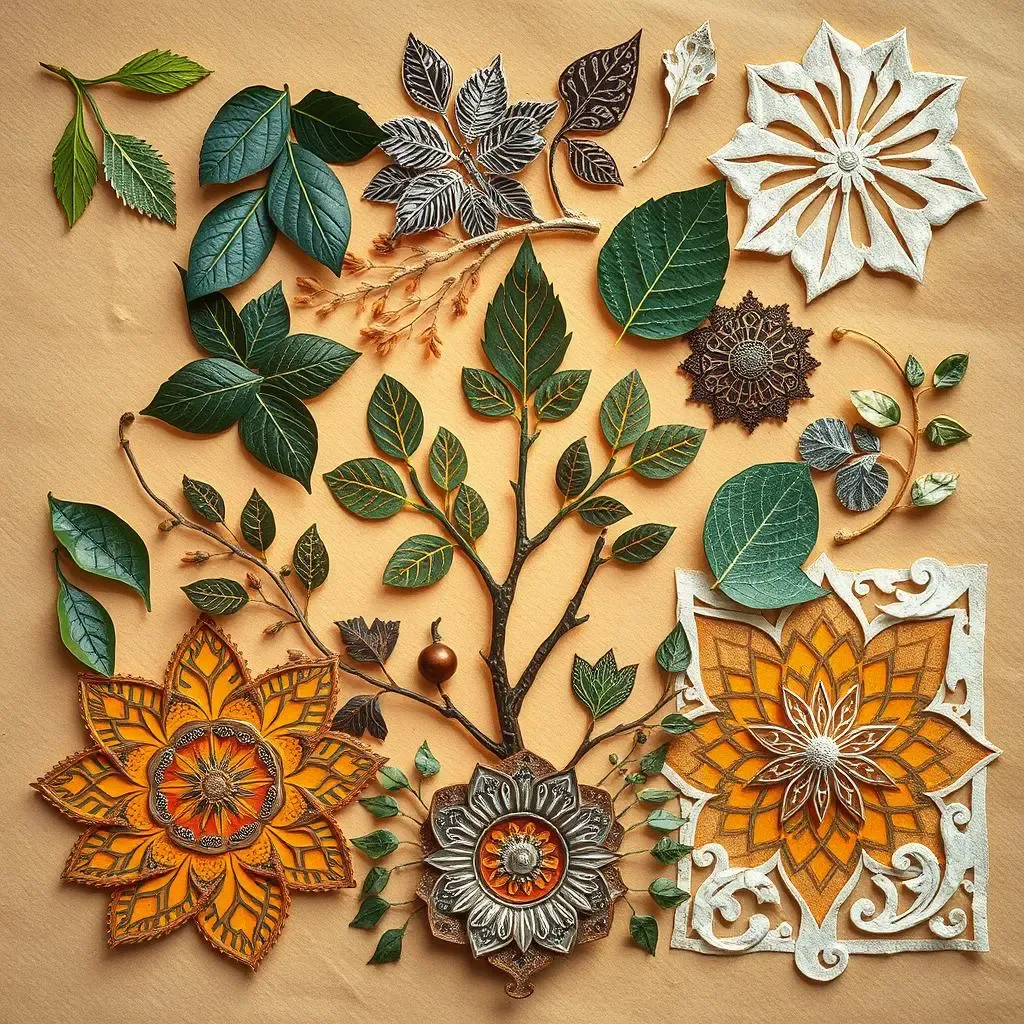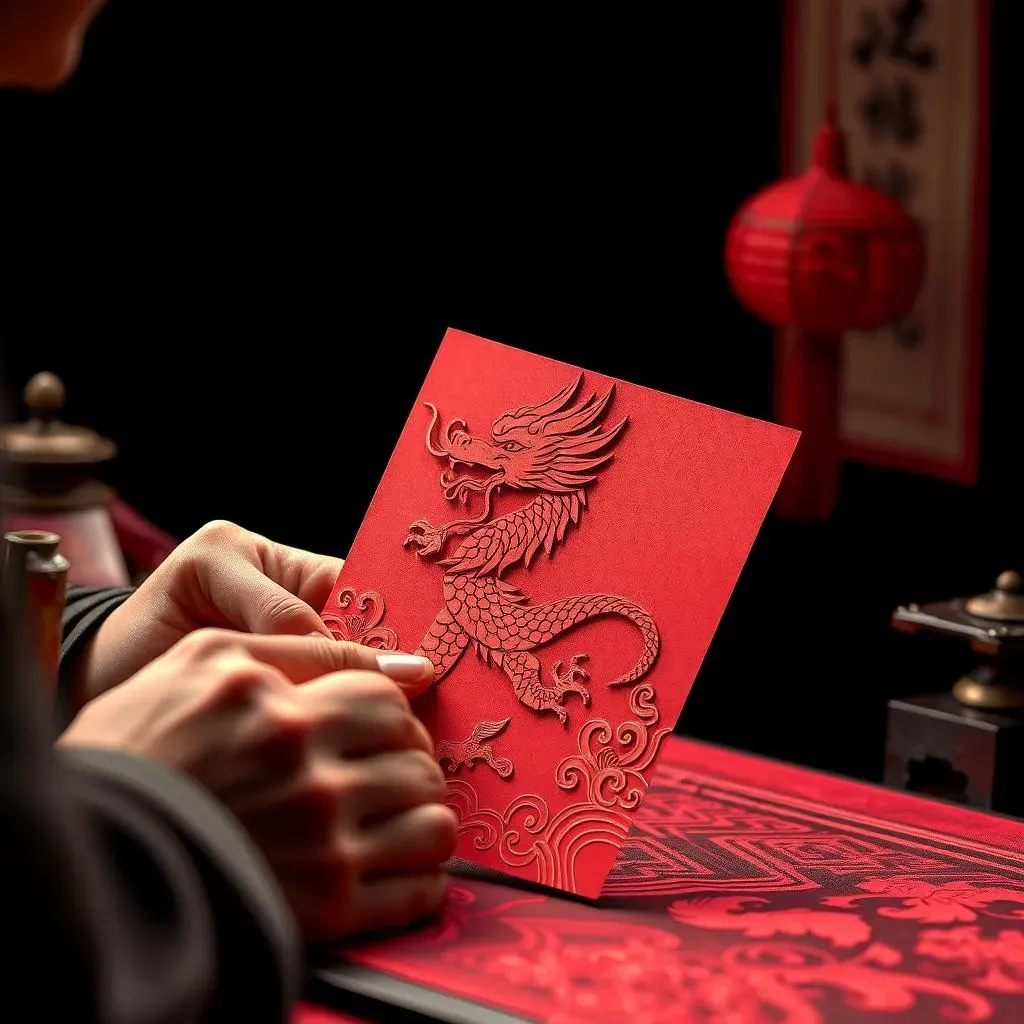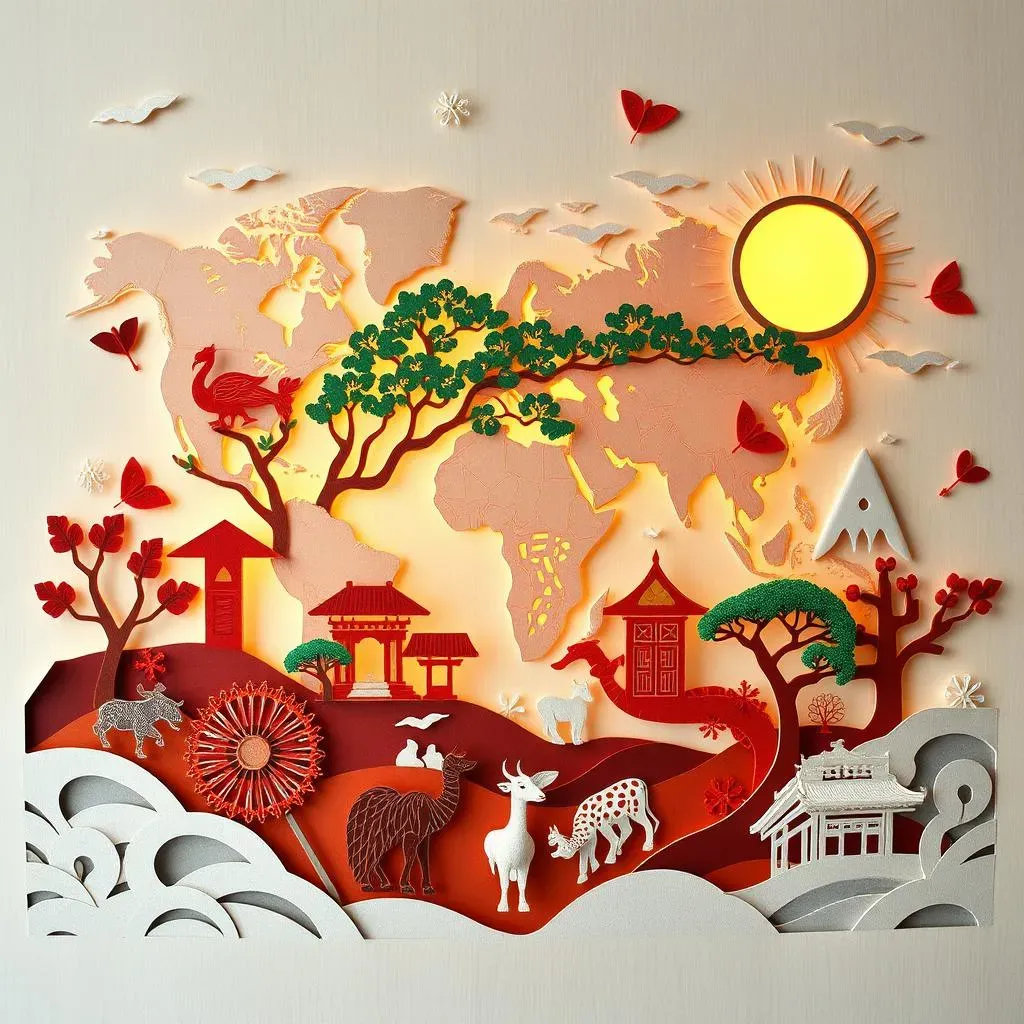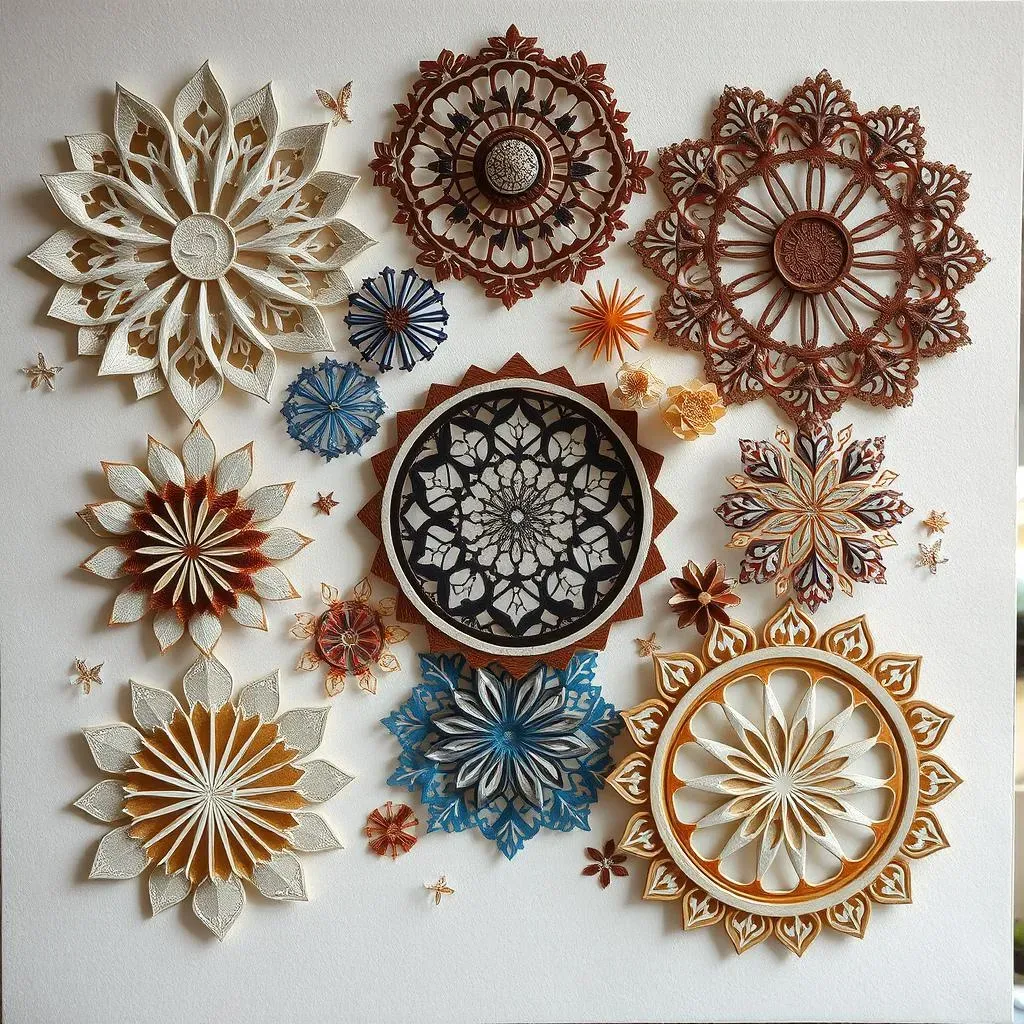Table of Contents
Have you ever admired the intricate beauty of a paper cut design? Those delicate, often mesmerizing patterns tell a story far older than you might imagine. This article embarks on a journey to uncover the secrets behind this ancient art form, exploring the question: where did paper cutting originate? We'll delve into the historical evidence, tracing the earliest known examples and exploring the cultural contexts in which this craft flourished. Prepare to be surprised by the diverse traditions that have sprung from these humble beginnings, from the rich history of Chinese paper cutting to the unique styles found in other corners of the globe. We'll examine how techniques evolved and how the craft adapted to different cultures, materials, and artistic expressions. This exploration isn't just about dates and places; it's about understanding the human ingenuity and creativity behind this enduring art. By the end of this journey, you'll have a new appreciation for the artistry of paper cutting and a clearer understanding of its fascinating origins and global reach. Let's begin!
Ancient Roots: Tracing the Origins of Paper Cutting
Ancient Roots: Tracing the Origins of Paper Cutting
Early Forms and Materials
Pinpointing the exact origin of paper cutting is tricky, like trying to find a single grain of sand on a vast beach. While the invention of paper in 2nd-century China revolutionized the craft, evidence suggests that the concept of cutting decorative shapes from thin materials predates paper itself. Think about it – long before paper existed, resourceful people likely experimented with leaves, thin metals, or even leather to create patterns. These early forms, though not technically "paper" cutting, laid the groundwork for the art we know today. Archaeological discoveries continue to shed light on these early practices, revealing surprising connections between seemingly disparate cultures.
For instance, some researchers point to ancient practices in various parts of the world involving the cutting of intricate designs on thin materials. These could have been used for religious ceremonies, decorative purposes, or even as stencils for other crafts. Imagine the meticulous work involved, the precision needed to create such designs with limited tools and materials. It’s a testament to human ingenuity and the universal desire for beauty and expression. The techniques likely varied depending on the available materials and cultural traditions, setting the stage for the diverse paper-cutting styles we see today. To learn more about the tools used in paper cutting, check out our guide on essential paper-cutting tools.
Region | Material | Possible Use |
|---|---|---|
Ancient China | Leaves, Metal Foil | Religious ceremonies, decoration |
Ancient Mexico | Amatl (bark paper) | Ritualistic purposes, stencils |
Various Cultures | Leather, Silk | Clothing decoration, religious iconography |
The Rise of Paper and its Impact
The invention of paper in China during the Han dynasty marked a turning point. Suddenly, a readily available, relatively inexpensive, and versatile material became available for creating these delicate designs. The impact was profound. Paper’s malleability and affordability allowed for widespread adoption of the craft, transforming it from a potentially exclusive practice to a more accessible form of artistic expression. This accessibility fueled innovation, leading to a rapid development of techniques and styles, especially in China. The increased availability of paper meant that more people could participate in this creative process, leading to a wider range of designs and applications.
The transition from other materials to paper was significant, not only in terms of availability but also in the creative possibilities it offered. The smooth surface of paper allowed for more intricate designs, finer details, and a greater level of precision. This led to increased complexity in the patterns, the incorporation of new motifs, and the development of specialized tools for cutting. The impact of paper on the evolution of paper cutting is undeniable. It's a great example of how a technological advancement can unlock new levels of artistic expression and cultural exchange. If you're curious about different paper types, explore our article on types of paper cutting.
- Increased accessibility of paper
- Development of new techniques and styles
- Greater complexity and precision in designs
Where Did Paper Cutting Originate: China's Enduring Legacy
Where Did Paper Cutting Originate: China's Enduring Legacy
Jianzhi: The Art Takes Shape
China's claim to a central role in the development of paper cutting is incredibly strong. The invention of paper itself in the 2nd century CE, attributed to Cai Lun, provided the perfect medium for this intricate art. However, the story doesn't begin there. Early forms, using materials like leaves and metal foil, likely existed, but paper dramatically changed the game. The art form known as jianzhi (剪纸) emerged, showcasing increasingly complex and refined designs. These weren't just simple cutouts; they were imbued with cultural significance, religious symbolism, and artistic flair.
Think of the vibrant red paper, often associated with good fortune and celebrations, used to create intricate patterns for windows during festivals like Chinese New Year. These "window flowers" (窗花; chuāng huā) weren't just decorations; they were expressions of hope, prosperity, and cultural identity. The designs themselves often told stories, depicted symbolic animals, or featured auspicious characters. This wasn't simply a craft; it was a living tradition, passed down through generations, evolving and adapting while maintaining its core essence. For more intricate designs, explore our guide on intricate paper cutting patterns.
- Paper's impact on accessibility and complexity
- The cultural significance of jianzhi
- The symbolism of color and design
A Flourishing Tradition: From Dynasties to Modern Times
As China's dynasties unfolded, so did the art of jianzhi. From the Tang and Song dynasties onwards, paper cutting became increasingly sophisticated, with skilled artisans creating breathtakingly detailed works. These weren't just simple shapes; they were miniature masterpieces, reflecting the artistic sensibilities and cultural beliefs of each era. The designs evolved, incorporating new motifs, techniques, and levels of intricacy. The art wasn't confined to the elite; it flourished in villages and cities, becoming an integral part of everyday life and celebrations.
Today, jianzhi continues to thrive, a testament to its enduring appeal and adaptability. While traditional styles remain popular, contemporary artists are pushing boundaries, experimenting with new techniques, and incorporating modern themes into their work. This blend of tradition and innovation ensures that the art form remains vibrant and relevant, a dynamic reflection of Chinese culture. For more inspiration on modern paper cutting, check out our ideas on paper cutting decorations. The legacy of Chinese paper cutting is not just about its historical significance; it's about its ongoing evolution and its continued ability to connect people to their cultural heritage.
Dynasty | Key Developments | Notable Characteristics |
|---|---|---|
Tang | Increased sophistication, religious themes | Intricate details, symbolic imagery |
Song | Wider adoption, use in various crafts | More diverse motifs, regional styles |
Modern | Innovation, fusion with modern art | Experimentation with materials and techniques |
A Global Phenomenon: Paper Cutting Traditions Around the World
A Global Phenomenon: Paper Cutting Traditions Around the World
Beyond China: A World of Styles
While China undeniably played a pivotal role in the development of paper cutting, the art didn't stay confined to its borders. Like seeds carried on the wind, the basic techniques and the underlying creative impulse spread, adapting and evolving as they traveled. Think of the vibrant papel picado of Mexico, with its intricate designs often used for festive celebrations. Or consider the delicate kirie of Japan, known for its precise cuts and often symbolic imagery. These are just two examples of how the core concept of paper cutting took root in different cultures, blossoming into unique and breathtaking artistic expressions. Each region infused the craft with its own aesthetic sensibilities, creating a rich tapestry of styles and traditions. The spread of paper cutting is a fantastic example of cultural exchange and adaptation.
The variations aren't merely cosmetic; they reflect the distinct cultural values, beliefs, and artistic preferences of each region. Motifs, color palettes, and even the tools used often vary significantly. For example, some cultures might favor bold, geometric designs, while others might prefer more flowing, organic forms. This diversity is what makes the global paper-cutting tradition so fascinating. It's a testament to the power of art to transcend geographical boundaries and reflect the unique spirit of different communities. To explore more about paper cutting tools, check out our guide to best scissors for paper cutting.
- Papel picado (Mexico)
- Kirie (Japan)
- Wycinanki (Poland, Ukraine, Belarus)
Cultural Adaptations and Unique Styles
The fascinating thing about the global spread of paper cutting is how each culture put its unique spin on it. It's not just about copying techniques; it's about integrating the art form into existing cultural practices and beliefs. For instance, in some regions, paper cutting became closely tied to religious ceremonies, with designs representing deities or sacred symbols. In others, it became a crucial part of festive celebrations, creating vibrant decorations for weddings, holidays, or other significant events. The flexibility of the craft allowed it to adapt to different needs and contexts, making it a powerful tool for cultural expression.
This ability to adapt and evolve is what ensured the survival and continued popularity of paper cutting across the world. It wasn't a static art form; it was a living tradition, constantly reinventing itself while retaining its core essence. The variations in styles, techniques, and cultural significance are what make this global art form so rich and compelling. Exploring these differences offers a unique window into the diverse artistic and cultural landscapes of the world. Discover more about different paper cutting techniques with our guide to paper cutting techniques.
Region | Cultural Significance | Typical Motifs |
|---|---|---|
Europe | Decorative, often associated with holidays | Floral designs, geometric patterns |
Middle East | Religious, used in celebrations and ceremonies | Calligraphy, geometric designs |
Africa | Storytelling, often used for educational purposes | Animal figures, symbolic shapes |
Where Did Paper Cutting Originate? Exploring Modern Interpretations
Where Did Paper Cutting Originate? Exploring Modern Interpretations
New Materials, New Possibilities
Today, paper cutting is experiencing a vibrant renaissance. Artists are experimenting with a wider range of materials than ever before, moving beyond traditional paper to explore everything from fabric and metal to even wood and glass. This expansion of materials opens up exciting new creative avenues, allowing for greater textural variations, unexpected color combinations, and novel approaches to design. The possibilities are seemingly endless, pushing the boundaries of what's considered "paper cutting" and challenging traditional notions of the craft.
Think about the possibilities! Imagine delicate lace-like designs cut into fabric, creating stunningly textured artwork. Or consider the bold, graphic shapes cut into metal, producing striking sculptural pieces. The use of different materials not only alters the aesthetic impact but also changes the very nature of the creative process. It forces artists to adapt their techniques, develop new skills, and explore unconventional approaches. This constant evolution keeps the art form fresh, dynamic, and endlessly inspiring. Learn more about different materials with our guide on paper types.
- Fabric
- Metal
- Wood
- Glass
Digital Tools and Techniques
The digital age has profoundly impacted paper cutting, bringing with it new tools and techniques that were unimaginable just a few decades ago. Computer-aided design (CAD) software allows artists to create incredibly intricate and precise designs with ease, pushing the boundaries of what's achievable by hand. Laser cutting machines offer the ability to produce incredibly detailed and complex patterns at a speed that would be impossible for any human artist. These technological advancements have opened up new possibilities for both artists and hobbyists, democratizing access to advanced techniques and making it easier than ever to create stunning paper-cut artwork.
While some might argue that these digital tools diminish the artistry of hand-cutting, the reality is far more nuanced. These tools don't replace the human element; they enhance it. They empower artists to focus on the creative vision, allowing them to explore complex designs and intricate details that would otherwise be practically impossible. In many cases, digital tools are used in conjunction with traditional hand-cutting techniques, creating a hybrid approach that combines the precision of technology with the unique touch of human artistry. This fusion of old and new is shaping the future of paper cutting, creating a dynamic and ever-evolving art form. For more information on machines, see our guide on paper cutting machines.
Tool | Advantages | Disadvantages |
|---|---|---|
CAD Software | Precise designs, ease of creation | Can lack the unique feel of hand-cut work |
Laser Cutter | High speed, intricate detail | Can be expensive, requires specialized training |
Contemporary Themes and Artistic Expressions
Modern paper-cutting artists are not simply replicating traditional designs; they're using the medium to explore contemporary themes and express their unique artistic visions. The art form is being used to address social issues, comment on current events, or simply explore the beauty of the everyday world. From politically charged statements to whimsical illustrations, the range of artistic expression is incredibly broad, demonstrating the versatility and adaptability of paper cutting as a medium.
This evolution isn't just about the techniques or materials; it's about the ideas being expressed. Paper cutting is being used as a powerful tool for social commentary, environmental awareness, and self-expression. Artists are using the medium to tell stories, share their perspectives, and connect with their audiences on a deeper level. This infusion of contemporary themes and artistic sensibilities keeps the art form alive, relevant, and constantly evolving. Find more creative ideas with our guide on easy paper cutting projects.
- Social commentary
- Environmental themes
- Abstract and experimental designs